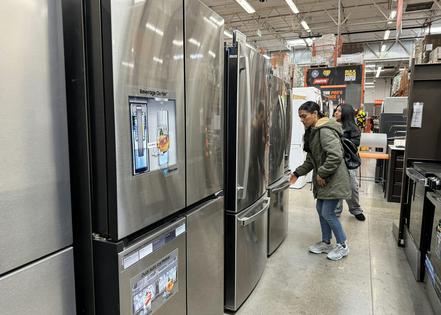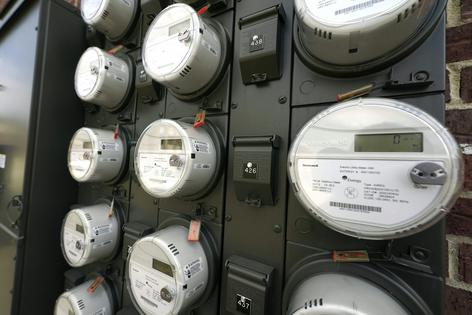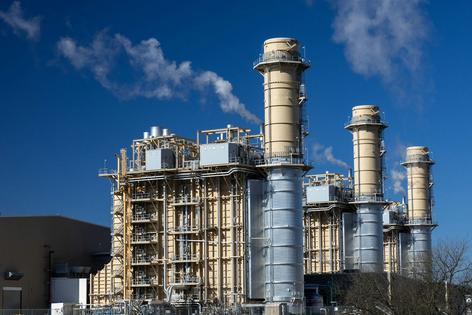Appliance efficiency standards save consumers billions, reduce pollution and fight climate change
Published in Science & Technology News
President Donald Trump has said he wants to reverse decades of regulations about energy efficiency in American household appliances, claiming doing so will provide Americans with “freedom to choose” products that meet their needs.
In an April 9, 2025, statement, Trump claimed he could alter government regulations on his own, without the legally required process of public notice and comment.
But as a scholar of environmental regulations, I know those regulations were created to save energy and lower utility bills for consumers. I also know that many companies and consumers have supported federal regulation to strengthen energy efficiency standards and generally have opposed weakening them.
The first government-set energy efficiency standards for appliances were issued by California in 1974. They were initially for refrigerators, the household appliance that used the most energy. Subsequently, several other household appliances were added. During the next decade, more states issued standards, as saving energy would help avoid the costs of constructing new power plants.
The proliferation of state standards led the federal government to prohibit states from issuing appliance efficiency standards once the federal government had done so. The first federal standards, in 1987, applied to 13 household products, including refrigerators.
Since then, the federal government has created standards for additional products and tightened existing ones. Those changes have progressively made home appliances and business and industrial equipment more efficient, saving consumers billions of dollars, decreasing air pollution from power plants and reducing carbon dioxide emissions that contribute to climate change.
Federal data indicates that 40% of total U.S. energy consumption – and 28% of U.S. carbon dioxide emissions – is attributable to household and industrial appliances, such as heating and cooling systems, refrigerators, lighting and various kinds of equipment, such as computers, printers and electric motors.
At present, the U.S. Department of Energy’s Appliance and Equipment Standards Program covers more than 70 products that the government estimates consume about 90% of energy used in homes, 70% of energy in commercial buildings and 30% of energy used in industry. The government estimates the standards saved American consumers $105 billion just in 2024 – with a typical household saving about $576 over the expenses if there were no efficiency standards.
Appliance energy efficiency standards now in place are cumulatively expected by the Department of Energy to reduce U.S. greenhouse gas emissions by approximately 2 billion metric tons over 30 years. That’s as much carbon dioxide as 15 million gas-powered cars would emit in that same period.
Many federal standards, including on light bulbs, electric motors and commercial heating and cooling equipment, have been based on those previously adopted by one or more states. Federal law permits states to issue standards for products that the federal government has not yet regulated: As of 2024, 18 states had set efficiency rules for a total of 22 types of appliances, including computers and televisions.
These appliance standards have reduced American energy use, including electricity. The existing national standards are projected to reduce overall national energy consumption by 10% between 2025 and 2035.
Those standards also improve public health, because there is less need to build new fossil-fuel power plants or operate existing ones. As a result, power generators have been able to reduce their emissions of dangerous pollutants such as nitrogen oxides, sulfur dioxide and mercury.
Making appliances more energy efficient has proved popular. A national survey released by the Consumer Federation of America in 2018 found that 71% of Americans “support the idea that the government should set and update energy efficiency standards for appliances.” Significantly, 72% of those surveyed named lowering electrical bills and 57% stated that avoiding construction of new power plants to keep electricity rates from rising were important reasons to increase appliance efficiency.
Support remains strong: A June 2024 YouGov poll found that 60% of Americans support tougher appliance efficiency standards.
From 1987 through 2007, more than three-quarters of national appliance energy efficiency standards were passed into law by Congress, with the rest created by administrative processes under existing laws. These legal standards received bipartisan support and were signed into law by Republican Presidents Ronald Reagan, George H.W. Bush and George W. Bush.
But more recently, partisanship has affected the setting of standards. Since 2008, whether standards improve or remain unchanged has depended on whether Democrats or Republicans occupied the White House.
The Obama administration enacted among the most ambitious energy efficiency standards for appliances and equipment to date. New standards for commercial air conditioners and furnaces affected heating and cooling equipment for half of the square footage used by the nation’s businesses. The rules were projected to reduce energy costs to businesses by $167 billion over the life of the regulated products.
But during the first Trump administration, improvements in existing standards came to a halt.
When Joe Biden became president, his administration resumed issuing new standards, most notably phasing out incandescent light bulbs. The Biden administration also issued new standards for furnaces, residential water heaters, stoves, washing machines and refigerators.
A new Biden rule for electric motors, which are widely used in manufacturing and processing equipment, incorporated recommendations from businesses and advocacy organizations. The rule was slated to take effect in 2028 and was expected to save businesses and consumers up to $8.8 billion over a 30-year period.
But the Trump administration has withdrawn this standard, along with others issued by the Biden administration, including for ceiling fans, dehumidifers and external power supplies. The administration has postponed the effective dates of other standards that had been finalized before Trump took office. The administration said the reversals would “slash unnecessary red tape and regulations that raise prices, reduce consumer choice, and frustrate the American people.”
Another set of politically controversial standards Biden introduced sought to encourage consumers to switch from stoves, furnaces and water heaters that use natural gas or propane to electric ones. The electric versions of those appliances are more energy efficient, while gas cooking emits toxic chemicals into the home. Switching can be expensive, and many consumers prefer gas-powered appliances, as of course does the natural gas industry, which has opposed these federal efforts.
And in early April 2025, Republicans in Congress used their legislative authority to overturn the regulations for natural gas water heaters. But most of the federal standards – and all of the state ones – remain in effect, at least for now.
This article is republished from The Conversation, a nonprofit, independent news organization bringing you facts and trustworthy analysis to help you make sense of our complex world. It was written by: David J. Vogel, University of California, Berkeley
Read more:
AI helps lighten the load on the electric grid – without skimping on people’s energy use
Not all consumers are equal – in terms of what they save by using efficient appliances
Companies will still face pressure to manage for climate change, even as government rolls back US climate policy
David J. Vogel does not work for, consult, own shares in or receive funding from any company or organization that would benefit from this article, and has disclosed no relevant affiliations beyond their academic appointment.















Comments